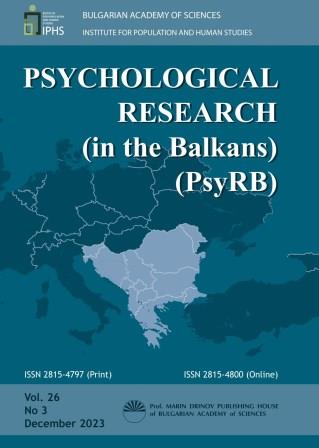AGGRESSIVENESS AND FACTORS FOR ITS MANIFESTATION AMONG GIRLS IN SCHOOL ENVIRONMENT IN THE CONTEXT OF SOCIALPSYCHOLOGICAL RESEARCH
AGGRESSIVENESS AND FACTORS FOR ITS MANIFESTATION AMONG GIRLS IN SCHOOL ENVIRONMENT IN THE CONTEXT OF SOCIALPSYCHOLOGICAL RESEARCH
(Theoretical overview)
Author(s): Ekaterina DimitrovaSubject(s): Social Sciences, Education, Psychology, Sociology, School education, Social psychology and group interaction, Personality Psychology, Sociology of Education
Published by: Институт за изследване на населението и човека - Българска академия на науките
Keywords: school environment; factors; girls; aggression; groups; hierarchy.
Summary/Abstract: Globally, various authors have found that the number of girls involved in serious aggressive acts is increasing and is beginning to form a significant social problem (e.g. Moretti et al., 2004; Orecchia, 2009; Dytham, 2018). The studies dedicated to aggression, violence and bullying at school in Bulgaria mainly examine gender and age differences between girls and boys, in a comparative plan, with regard to their aggressive manifestations. It is usually found that boys use mainly physical aggression, and girls use verbal and indirect aggression (e.g. Kalchev, 2005; Shumkova, 2010; Bakalova et al., 2021). It’s often held that girls don’t bully like boys do, or that their actions are on a smaller scale and “not that bad.” (Dytham, 2018:2). However, often insurmountable conflicts arise among girls, which develop into pressure aimed at exclusion from the group, chronic aggressive acts, beatings, vandalism, destructive behavior, etc. Informal, hierarchical social groups are also formed in the school environment that are composed only of dominant girls - the so-called gender groups (Reay, 2010). They use manipulation, bullying, intimidation, and ridicule to control others and keep their positions and reputations unchallenged, helping them maintain the hierarchy, boundaries, and image of their own group. Among the considerable number of Bulgarian studies of aggression in school environment, no in-depth theoretical analysis or scientific research can be found that is based on the factors that give rise to interpersonal and/or intergroup aggression among girls. In this article, basic theoretical propositions are presented in this direction and a structured model of basic factors directly related to the manifestations of aggression among girls in school environment is derived.
Journal: Psychological Research (in the Balkans)
- Issue Year: 26/2023
- Issue No: 3
- Page Range: 220-231
- Page Count: 12
- Language: English

